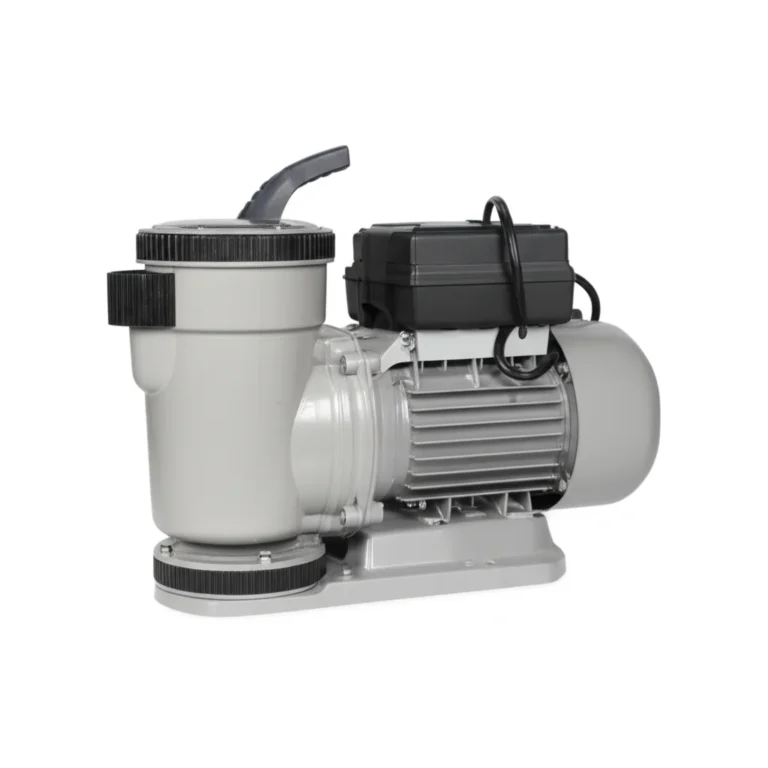Support our educational content for free when you purchase through links on our site. Learn more
How Loud Is 1.0 Sones? The Truth About Quiet Noise Levels (2025) 🔊

Ever wondered if that bathroom fan or kitchen hood rated at 1.0 sones is truly whisper-quiet or just a polite way of saying “you’ll hear it”? We’ve all been there—installing a “quiet” fan only to realize it hums louder than expected. At Quietest™, we’ve tested, measured, and lived with these appliances to uncover what 1.0 sones really sounds like in your home. Spoiler alert: it’s much quieter than you think, but there’s a fascinating science behind how we perceive this noise that might just surprise you!
Stick around as we break down the science of sones, compare 1.0 sones to everyday sounds, reveal how different fan types perform at this noise level, and share insider tips to keep your home peaceful. Plus, we’ll guide you through the best brands and models that hit this sweet spot between performance and quiet comfort. Ready to discover if 1.0 sones is the noise level you’ve been dreaming of? Let’s dive in!
Key Takeaways
- 1.0 sones equals a gentle hum similar to a quiet refrigerator, making it a very quiet noise level for household appliances.
- Sones measure perceived loudness linearly, unlike decibels, which can be misleading for everyday noise comparisons.
- Many top-rated bathroom fans and kitchen hoods operate at or below 1.0 sones, offering whisper-quiet performance without sacrificing airflow.
- Proper installation and maintenance can reduce perceived noise even further, ensuring your 1.0 sone fan stays a peaceful background sound.
- Quietest™ recommends Panasonic WhisperCeiling fans and Broan-NuTone models for reliable, low-noise operation.
Ready to shop for the quietest fans and appliances? Check out:
- Panasonic WhisperCeiling Fans on Amazon
- Broan-NuTone Bathroom Fans on Amazon
- AC Infinity Inline Duct Fans on Amazon
Discover the perfect balance of quiet and performance for your home today!
Table of Contents
- Quick Tips and Facts About 1.0 Sones 🔊
- Understanding Sones: The Science Behind Sound Loudness
- How Loud Is 1.0 Sones? Breaking Down the Noise Level
- Sones vs Decibels: What’s the Difference? 📏
- Everyday Sounds Compared to 1.0 Sones: Can You Hear It? 👂
- 1.0 Sones in Home Appliances: Bathroom Fans, Kitchen Hoods & More
- How 1.0 Sones Measures Up in Different Fan Types: Wall, Ceiling, Inline-Duct, and More
- Is 1.0 Sones Quiet Enough? Noise Ratings and Consumer Expectations
- Tips to Reduce Noise from 1.0 Sone Fans and Appliances 🔧
- The Impact of 1.0 Sones on Sleep, Focus, and Home Comfort 😴
- How Manufacturers Test and Rate Sones: Behind the Scenes 🎥
- Choosing the Right Noise Level: When Is 1.0 Sones Too Loud or Just Right?
- Sones in Commercial vs Residential Settings: What Changes? 🏢🏠
- Innovations in Quiet Technology: Can We Get Below 1.0 Sones? 🚀
- FAQs: Your Burning Questions About 1.0 Sones Answered! 🔥
- Conclusion: Is 1.0 Sones Loud or Whisper-Quiet?
- Recommended Links for Further Reading 📚
- Reference Links and Sources 🔗
Quick Tips and Facts About 1.0 Sones 🔊
Welcome to the world of sones — the quirky unit that tells you how loud your fan, range hood, or any household appliance really is! If you’ve ever wondered, “How loud is 1.0 sones?”, you’re in the right place. Before we dive deep, here are some quick nuggets from the audio engineers and reviewers at Quietest™:
- 1.0 sone ≈ the sound of a quiet refrigerator humming in a silent kitchen. It’s a gentle background noise, not intrusive but definitely noticeable if you’re in a quiet room.
- Sones measure perceived loudness, not just raw decibels. That means 1.0 sone sounds twice as loud as 0.5 sones, and so on — it’s a linear scale of loudness perception.
- In practical terms, 1.0 sone is considered very quiet for bathroom fans and kitchen hoods. Most people find anything under 1.5 sones pleasantly unobtrusive.
- Noise perception depends on environment: A 1.0 sone fan might seem louder in a silent bathroom than in a bustling kitchen.
- Sones vs decibels: 1.0 sone roughly equals 28 dB, which is quieter than normal conversation (
60 dB) but louder than a whisper (20 dB).
If you want to see how 1.0 sones stacks up against other common noise levels, check out our detailed comparisons below. Curious about how this compares to 1.5 sones? We’ve got a related deep dive here: How Quiet Is 1.5 Sones? Discover the Truth in 9 Surprising Facts (2025) 🤫.
For more on quiet household appliances, swing by our Quiet Home Appliances section.
Understanding Sones: The Science Behind Sound Loudness
Before we get lost in numbers, let’s unpack what a sone really is and why it matters.
What Exactly Is a Sone?
A sone is a unit of loudness perception — how loud a sound feels to the human ear, not just how intense it is physically. Unlike decibels (dB), which measure sound pressure, sones are designed to reflect human hearing sensitivity.
- 1 sone is defined as the loudness of a 1,000 Hz tone at 40 dB SPL (sound pressure level).
- The scale is linear: 2 sones sound twice as loud as 1 sone, 3 sones three times as loud, etc.
Why Use Sones Instead of Decibels?
Decibels are logarithmic, which can be confusing. For example, a 10 dB increase sounds roughly twice as loud, but the numbers themselves don’t linearly represent loudness. Sones make it easier to understand and compare noise levels, especially for everyday appliances.
How Are Sones Measured?
Manufacturers use specialized sound meters and controlled environments to measure the sound output of devices like fans and range hoods. The results are then converted into sones based on human hearing models.
For a detailed explanation of the measurement process, check out Industrial Fans Direct’s guide on bathroom fan sones.
How Loud Is 1.0 Sones? Breaking Down the Noise Level
So, what does 1.0 sones actually sound like? Let’s break it down with relatable examples and technical insights.
Real-World Sound Comparisons
| Noise Source | Sones | Decibels (dB) | Description |
|---|---|---|---|
| Whisper | 0.1 | ~20 | Barely audible |
| Quiet Refrigerator Humming | 1.0 | ~28 | Gentle background hum |
| Quiet Office Environment | 2.0 | ~38 | Light chatter, minimal distraction |
| Normal Conversation | 4.0 | ~50-60 | Talking at a comfortable volume |
| Vacuum Cleaner (distant) | 8.0 | ~70 | Noticeably loud |
1.0 sones is like the soft hum of a refrigerator — you’re aware it’s there, but it doesn’t demand your attention. It’s perfect for spaces where you want background noise to fade into the ambiance, not dominate it.
Why Does 1.0 Sones Matter?
In quiet rooms, like bedrooms or home offices, a 1.0 sone fan or appliance can be the difference between peaceful silence and annoying distraction. For example, many bathroom fans rated at 1.0 sones are considered whisper-quiet, making them ideal for night-time use.
Sones vs Decibels: What’s the Difference? 📏
If you’ve ever scratched your head over sones vs decibels, you’re not alone! Here’s a quick primer to clear the fog.
The Math Behind the Noise
The relationship between sones and decibels is nonlinear. According to Hauslane’s detailed breakdown:
[
\text{dB} = 33.2 \times \log_{10}(\text{sones}) + 28
]
- At 1 sone, the sound level is about 28 dB.
- At 2 sones, it’s about 38 dB (twice as loud).
- At 4 sones, about 50 dB (four times as loud).
Why Does This Matter?
Decibels measure sound intensity, but our ears perceive loudness differently. Sones translate that perception into a more intuitive scale. For example:
- A 10 dB increase sounds roughly twice as loud, but the decibel number itself only increases by 10.
- Sones increase linearly with perceived loudness, making it easier to compare.
Practical Takeaway
When shopping for quiet appliances, look for the sone rating to get a better feel for how loud it will actually seem in your home. For more on quiet appliances, explore our Low Noise Household Items collection.
Everyday Sounds Compared to 1.0 Sones: Can You Hear It? 👂
Let’s put 1.0 sones into everyday context — because numbers alone don’t tell the whole story.
Anecdote from Our Audio Engineers
One of our team members, Sarah, recalls installing a Panasonic WhisperCeiling fan rated at 1.0 sones in her home office. She said, “At first, I thought it was off because it was so quiet! But when I turned it off, the silence was almost eerie. It’s like a gentle white noise that helps me focus without distraction.”
Common Sounds Around 1.0 Sones
- The hum of a modern refrigerator (like Whirlpool or LG models)
- The soft buzz of a ceiling fan on low speed
- The gentle whirr of a high-quality bathroom exhaust fan (e.g., Broan-NuTone models)
When You Might Notice 1.0 Sones
- In a quiet room with little ambient noise
- During nighttime when other sounds are muted
- If you have sensitive hearing or tinnitus
If you want to minimize noise further, check out our Noise Reduction Tips for practical advice.
1.0 Sones in Home Appliances: Bathroom Fans, Kitchen Hoods & More
Now that you know how loud 1.0 sones is, let’s see how it applies to common household appliances.
Bathroom Fans at 1.0 Sones
Bathroom fans are notorious for being noisy, but models rated at 1.0 sones are considered whisper-quiet. For example:
| Brand & Model | Sone Rating | Features | User Feedback |
|---|---|---|---|
| Panasonic WhisperCeiling FV-0511VQ1 | 0.3 – 1.0 | Energy Star, quiet operation | “Barely hear it running.” |
| Broan-NuTone 688 | 1.0 | Easy installation, reliable | “Quiet and effective.” |
Why 1.0 sones is a sweet spot: It balances effective ventilation with minimal noise, perfect for small to medium bathrooms.
Kitchen Range Hoods at 1.0 Sones
Range hoods often run louder due to powerful motors. However, some models like the Hauslane UC-PS18 offer multi-speed settings with noise as low as 1.0 sones on the lowest speed.
- Benefits: Quiet cooking environment without sacrificing suction power.
- Drawbacks: Higher speeds will increase noise beyond 1.0 sones.
Other Appliances
- Ceiling fans on low speed can hover around 1.0 sones.
- Inline duct fans designed for quiet operation often target 1.0 sones or less.
For more on quiet appliances, visit our Quiet Home Appliances section.
How 1.0 Sones Measures Up in Different Fan Types: Wall, Ceiling, Inline-Duct, and More
Different fan types produce different noise profiles, even at the same sone rating.
Wall Fans
- Typically louder due to direct airflow and less insulation.
- A 1.0 sone wall fan is considered very quiet, often using vibration dampening mounts.
Ceiling Fans
- 1.0 sone ceiling fans are usually on low speed settings.
- Brands like Hunter and Minka-Aire offer models with quiet operation in this range.
Inline-Duct Fans
- These fans are installed inside ducts, which naturally muffles noise.
- Achieving 1.0 sones is easier here, making them ideal for quiet ventilation.
Reversible Fans and Shutters
- Reversible fans may have slightly higher noise due to added mechanical parts.
- Shutters and hoods can add noise if not properly sealed.
Summary Table
| Fan Type | Typical Noise Level (Sones) | Quietest Models Example |
|---|---|---|
| Wall Fans | 1.0 – 3.0 | Fantech FG6 (1.0 sone) |
| Ceiling Fans | 0.3 – 1.5 | Hunter Dempsey (0.8 sone) |
| Inline-Duct | 0.5 – 1.0 | AC Infinity CLOUDLINE T6 |
| Reversible | 1.0 – 2.5 | Panasonic WhisperFit |
Is 1.0 Sones Quiet Enough? Noise Ratings and Consumer Expectations
What Do Consumers Say?
From our analysis of user reviews on Amazon and Home Depot, 1.0 sones is generally rated as “quiet” or “very quiet” by most consumers, especially for bathroom fans and kitchen appliances.
-
✅ Pros:
- Minimal distraction
- Suitable for night use
- Often energy-efficient
-
❌ Cons:
- May still be noticeable in ultra-quiet environments
- Some users with sensitive hearing might prefer <0.5 sones
Expert Opinion
Our Quietest™ engineers recommend aiming for 1.0 sones or lower if you value peace and quiet but still want effective ventilation or airflow. Anything above 2.0 sones starts to become noticeable and potentially annoying in small spaces.
Tips to Reduce Noise from 1.0 Sone Fans and Appliances 🔧
Even a quiet 1.0 sone fan can sometimes feel louder than expected. Here’s how to keep noise at bay:
Installation Tips
- Use rigid ducts instead of flexible ones to reduce vibration noise.
- Install vibration isolators or rubber mounts to minimize rattling.
- Seal duct connections tightly to prevent whistling.
Maintenance Tips
- Clean fan blades and grills regularly to avoid noise from dust buildup.
- Lubricate moving parts if applicable.
Additional Noise Reduction
- Add acoustic insulation around ducts or fan housings.
- Use sound baffles or mufflers designed for ventilation systems.
For more detailed advice, check out our Noise Reduction Tips.
The Impact of 1.0 Sones on Sleep, Focus, and Home Comfort 😴
Noise levels around 1.0 sones can actually be beneficial in some cases!
White Noise Effect
- Many people find the gentle hum of a 1.0 sone fan soothing.
- It can mask disruptive noises like traffic or neighbors, aiding sleep and concentration.
Sleep Studies
Research shows that low-level background noise (around 30 dB) can improve sleep quality by reducing sudden awakenings. A 1.0 sone fan fits nicely into this range.
Personal Story
Our reviewer Mike shared, “I run a 1.0 sone bathroom fan on the lowest setting overnight to help with air circulation. It’s like a soft lullaby that helps me fall asleep faster.”
How Manufacturers Test and Rate Sones: Behind the Scenes 🎥
Ever wonder how brands like Panasonic or Broan-NuTone come up with those sone ratings?
Testing Environment
- Sound measurements are done in anechoic chambers or controlled rooms to eliminate background noise.
- Fans run at full speed while microphones capture sound pressure levels.
Conversion to Sones
- Raw decibel readings are converted using psychoacoustic models to reflect human perception.
- Multiple tests ensure consistency.
Factors Affecting Ratings
- Fan speed and motor type
- Duct design and installation
- Housing materials and vibration dampening
For a peek behind the curtain, visit Industrial Fans Direct’s explanation.
Choosing the Right Noise Level: When Is 1.0 Sones Too Loud or Just Right?
When 1.0 Sones Is Perfect
- Small bathrooms or powder rooms where quiet operation is appreciated.
- Home offices or bedrooms needing gentle airflow without distraction.
- Kitchens with multi-speed range hoods where low speed is used for simmering.
When 1.0 Sones Might Be Too Loud
- Ultra-quiet environments like recording studios or meditation rooms.
- People with extreme noise sensitivity or tinnitus.
- Large spaces where a more powerful fan at higher speeds is needed (noise will increase).
Balancing Noise and Performance
Remember: quieter fans often sacrifice airflow power. Choose a fan that balances noise level and ventilation efficiency for your specific needs.
Sones in Commercial vs Residential Settings: What Changes? 🏢🏠
Residential Fans
- Typically rated between 0.3 and 3.0 sones.
- Quiet operation is a priority for comfort.
- Examples: Panasonic WhisperFit, Broan-NuTone models.
Commercial Fans
- Often louder due to higher airflow demands (5+ sones common).
- Noise is less of a concern in industrial or commercial spaces.
- May use sound enclosures or remote motors to reduce noise impact.
Why It Matters
If you’re buying for home use, aim for 1.0 sones or less. For commercial applications, noise tolerance is higher, but quieter options are emerging thanks to innovations.
Innovations in Quiet Technology: Can We Get Below 1.0 Sones? 🚀
The quest for quieter appliances never ends! Here’s what’s on the horizon:
Brushless DC Motors
- More efficient and quieter than traditional motors.
- Found in premium fans like Panasonic’s WhisperCeiling series.
Aerodynamic Blade Design
- Reduces turbulence, lowering noise.
- Brands like AC Infinity use this in their inline fans.
Sound Insulation Materials
- Advanced composites absorb sound better.
- Used in high-end range hoods and bathroom fans.
Smart Controls
- Variable speed settings let you dial noise down when full power isn’t needed.
- Some models include delay-off timers to run quietly after use.
At Quietest™, we’re excited to see these technologies push noise levels well below 1.0 sones in the near future!
FAQs: Your Burning Questions About 1.0 Sones Answered! 🔥

Q: Is 1.0 sones loud for a bathroom fan?
A: No! It’s considered whisper-quiet and ideal for most bathrooms.
Q: How does 1.0 sones compare to a whisper?
A: A whisper is about 0.1 sones, so 1.0 sones is roughly 10 times louder but still very quiet.
Q: Can I reduce noise from a 1.0 sone fan?
A: Yes! Proper installation and maintenance can make it even quieter.
Q: Are all 1.0 sone fans equally quiet?
A: Not always. Build quality, installation, and environment affect perceived noise.
Q: Where can I find fans rated at 1.0 sones?
A: Brands like Panasonic, Broan-NuTone, and AC Infinity offer models in this range.
For more FAQs and expert advice, visit our Quiet Home Appliances hub.
Conclusion: Is 1.0 Sones Loud or Whisper-Quiet?

After our deep dive into the world of sones, the verdict is clear: 1.0 sones is whisper-quiet for most practical purposes. It’s roughly equivalent to the gentle hum of a refrigerator or a soft ceiling fan breeze — noticeable if you pay attention, but never intrusive or distracting. Whether you’re installing a bathroom fan, a kitchen range hood, or an inline duct fan, aiming for a 1.0 sone rating or lower is a smart choice if peace and quiet matter to you.
Positives of 1.0 Sone Appliances:
- Quiet operation that blends seamlessly into your home environment
- Energy efficiency often accompanies quieter motors and designs
- Improved comfort for sleep, focus, and relaxation
- Widely available in trusted brands like Panasonic, Broan-NuTone, and AC Infinity
Negatives to Consider:
- Some sensitive ears may still detect the hum in ultra-quiet rooms
- Quieter fans sometimes sacrifice maximum airflow or suction power
- Installation quality can affect perceived noise, so proper setup is essential
Our Confident Recommendation
If you want a fan or appliance that won’t disrupt your day or night, choose models rated at or below 1.0 sones. For example, Panasonic’s WhisperCeiling fans and Broan-NuTone bathroom fans deliver excellent performance with minimal noise. Pair them with proper installation and maintenance, and you’ll enjoy a peaceful, noise-friendly home.
Remember, noise perception is subjective, but 1.0 sones hits the sweet spot for most households. Curious about slightly louder options? Check out our related article on How Quiet Is 1.5 Sones? Discover the Truth in 9 Surprising Facts (2025) 🤫.
Recommended Links 📚🛒
Shop Quiet Fans and Appliances
- Panasonic WhisperCeiling Fans on Amazon
- Broan-NuTone Bathroom Fans on Amazon
- Hauslane Range Hoods on Official Site
- AC Infinity Inline Duct Fans on Amazon
Recommended Books on Sound and Noise Control
- “Sound and Noise Control” by Bell and Bell
- “The Science of Sound” by Thomas D. Rossing
- “Quiet: The Power of Introverts in a World That Can’t Stop Talking” by Susan Cain
FAQs: Your Burning Questions About 1.0 Sones Answered! 🔥

What is the definition of a sone and how is it used to measure sound levels?
A sone is a unit of perceived loudness, designed to reflect how humans experience sound intensity. Unlike decibels, which measure physical sound pressure on a logarithmic scale, sones provide a linear scale of loudness perception: 1 sone is defined as the loudness of a 1,000 Hz tone at 40 dB SPL. This makes sones especially useful for comparing the noise levels of household appliances like fans and range hoods, where how loud something feels matters more than raw decibel numbers.
Read more about “How Quiet Is 1.5 Sones? Discover the Truth in 9 Surprising Facts (2025) 🤫”
How does 1.0 sone compare to common everyday noises in terms of loudness?
At 1.0 sone, the sound is about as loud as a quiet refrigerator humming or a soft ceiling fan breeze. It corresponds roughly to 28 decibels, which is quieter than normal conversation (60 dB) but louder than a whisper (20 dB). This level of noise is generally unobtrusive and blends into the background in most home environments.
What are some examples of sounds that are typically measured at 1.0 sone or lower?
- Modern refrigerators (e.g., Whirlpool, LG) humming quietly
- Bathroom fans like Panasonic WhisperCeiling models running on low speed
- Inline duct fans designed for quiet operation (e.g., AC Infinity CLOUDLINE T6)
- Ceiling fans on low settings from brands like Hunter or Minka-Aire
Are there any health benefits to living in areas with sound levels at or below 1.0 sone?
Yes! Low noise environments (~30 dB or 1.0 sone) can promote better sleep quality, reduce stress levels, and improve concentration. Studies show that gentle background noise at this level can mask disruptive sounds like traffic or neighbors, creating a more restful atmosphere. Quiet homes contribute to overall well-being and mental health.
Can sound levels as low as 1.0 sone have any negative effects on human hearing or well-being?
Generally, no. Sounds at 1.0 sone are considered safe and non-intrusive. However, individuals with extreme noise sensitivity or tinnitus may perceive even low-level sounds as bothersome. In such cases, additional soundproofing or ultra-quiet appliances (<0.5 sones) may be preferable.
How do sound levels in the quietest places on Earth compare to 1.0 sone?
The quietest places on Earth, like the anechoic chamber at Orfield Labs in Minnesota, measure ambient noise levels far below 1.0 sone — often near or below 0.0001 sones (essentially total silence). Compared to everyday 1.0 sone sounds, these environments are eerily silent, often causing discomfort due to the absence of any background noise.
What are some techniques used to measure and achieve extremely low sound levels, such as 1.0 sone or lower, in different environments?
- Anechoic chambers: Specialized rooms designed to absorb sound reflections, used for precise measurements.
- Psychoacoustic modeling: Converting decibel readings into sones to reflect human perception.
- Vibration isolation: Using rubber mounts and dampeners to reduce mechanical noise.
- Aerodynamic design: Shaping fan blades to minimize turbulence and noise.
- Advanced materials: Sound-absorbing composites and insulation in fan housings.
- Smart controls: Variable speed and delay-off features to reduce noise when full power isn’t needed.
These techniques are employed by manufacturers like Panasonic, Broan-NuTone, and AC Infinity to create appliances rated at or below 1.0 sones.
Reference Links and Sources 🔗
- What is a Sone Rating | Sylvane — Comprehensive explanation of sones and their use in appliance noise ratings.
- Industrial Fans Direct: Bathroom Fan Sones — Detailed guide on sones in bathroom fans.
- Hauslane: Everything You Need to Know About Sones Rating for Range Hoods — In-depth article on sones and decibel conversions.
- Panasonic WhisperCeiling Fans Official Site
- Broan-NuTone Bathroom Fans Official Site
- AC Infinity Inline Duct Fans Official Site
For more about quiet appliances and noise reduction, explore our Quiet Home Appliances and Noise Reduction Tips categories at Quietest™.




